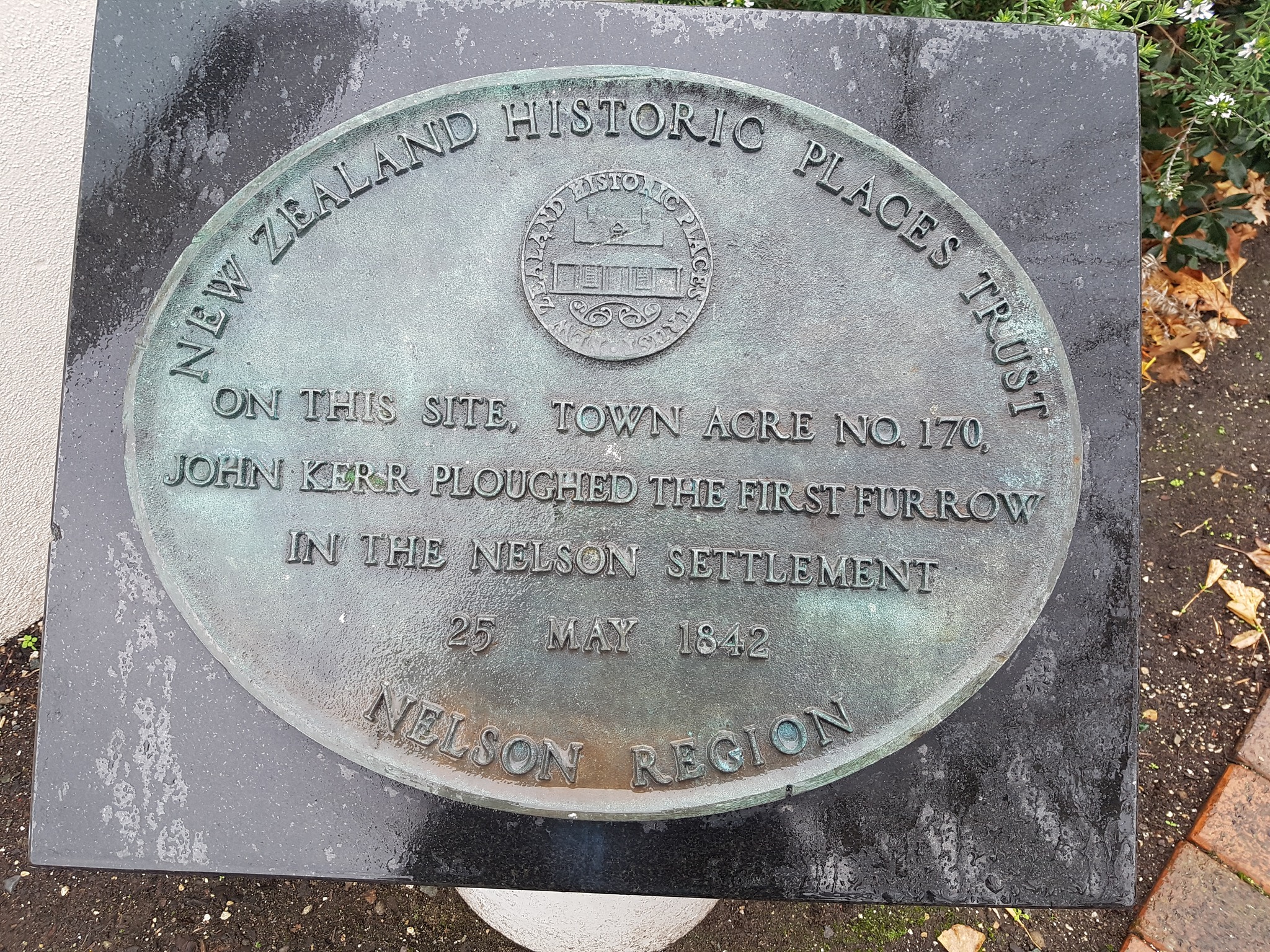History: Remembering the ploughing of Nelson’s first furrow

A plaque in Buxton Square commemorating the ploughing of the first furrow in Nelson in 1842. Photo: Supplied.
On the south side of Buxton Square in Nelson, there is a plaque commemorating the ploughing of the first furrow in Nelson in 1842.
This plaque is at the carpark entrance of the walkway beside what used to be the Public Trust building and is now known as The Buxton.
It reads: “On this site, Town Acre 170, John Kerr ploughed the first furrow in the Nelson settlement 25 May 1842.”
John Kerr, his wife Janet, and six sons, arrived in Nelson on board the Fifeshire, 1 February, 1842.
John was born 22 November 1795 at Newbattle, Midlothian, Scotland. In May 1814, he married Janet Ramage at Humbie East in East Lothian, Scotland.
The Kerr family sailed from London 17 September 1841 and after 4 months at sea arrived in Nelson.
There is some confusion over John Kerr’s age as the 1841 Scotland Census records it as 40, as does the passenger list on the Fifeshire. However, if that is correct then it would have him aged 14 when he married Janet in 1814.
A birth record gives the year as 1795 which would have him aged 19 when he married, a much more likely age. One source of information stated that he gave himself a younger age so as to benefit from free or assisted immigration passage.
Having been a ploughman from an early age, he certainly matched the occupation criteria for free passage offered by the New Zealand Company to the early immigrants.

The bullocks were kept in the area now known as Kerr St, off lower Hardy St. The question still remains to be answered - who owned the plough and the bullocks? With no direct source stating where or how he obtained the bullocks, one might speculate that he acquired these via Australia or Port Nicholson (Wellington) or did they belong to the New Zealand Company?
With Kerr on record as a Farm Servant (on his marriage record) it would appear that he was working for a landowner in Scotland. Three of his sons were also agricultural labourers.
Could they have saved enough funds to bring out their own plough or did they purchase one in Nelson? The Colonist reports 17 bullocks were landed at Nelson in mid-April 1842 after a ten-day voyage from Twofold Bay in New South Wales, Australia. By July that year, working bullocks were selling for £60 per pair.
Town acres were not allocated until two months after Kerr’s arrival in Nelson. Suburban sections were not distributed until August 1842 and January 1843. Land still had to be found for 150-acre rural sections. Arthur Wakefield chose Kerr to establish and farm a section in Waimea West, near Aldourie Rd.
He was given the lease of Section No. 129, the owner being the New Zealand Company. Kerr moved his family from Nelson to the property at Waimea West in July 1842. The fern and scrub had been burned off by the surveyors making the ground ready for ploughing.

It is interesting to note that the first Anglican church service was held in John Kerr’s barn, 6 November 1842.
Kerr died of an apoplexy in 1863, aged 68. He is buried in St Michael’s churchyard, Waimea West.
In the 29 August 1857 edition of the Nelson Examiner, the editor referred to him as “the Patriarch of all our agriculturists”.
Source: Historic Stories from Nelson’s Wakapuaka Cemetery Team. Every effort has been made to guarantee the accuracy of the researched content.
